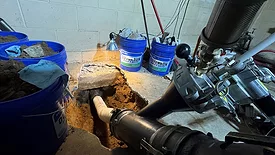Home » Keywords: » piping
Items Tagged with 'piping'
ARTICLES
Building trust through innovation and code compliance.
Read More
Legionella cases are leveling off, but experts say we must ramp up prevention
Climate change and aging infrastructure impact water sources and treatment.
May 6, 2025
Heating Perceptions | Scott Secor
Old home needs entirely new heating system; is it worth it?
Exploded radiators
March 10, 2025
Hydronics Workshop | John Siegenthaler
Be prepared to advocate for hydronic-based heat pump systems
Different strokes.
March 9, 2025
Hydronics Workshop | John Siegenthaler
Heat pumps open possibilities for DWH and hydronic-based cooling
Expanding a concept — part two.
February 4, 2025
Heating Perceptions | Scott Secor
Young people do want to work
Don’t judge everyone based on stereotypes.
February 3, 2025
Heating Perceptions | Scott Secor
Low-pressure steam boiler piping gets much-needed replacement
71-year-old piping failure at an apartment complex resulted in many challenges.
January 8, 2025
Keep your content unclogged with our newsletters!
Stay in the know on the latest plumbing & piping industry trends.
JOIN TODAY!Copyright ©2025. All Rights Reserved BNP Media.
Design, CMS, Hosting & Web Development :: ePublishing













